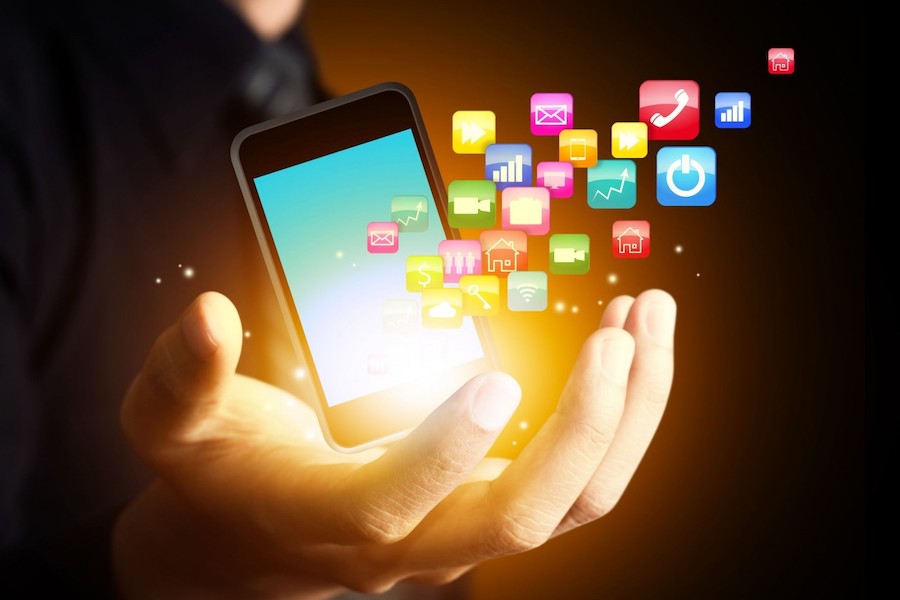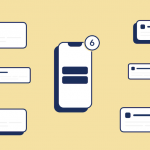Spends on mobile advertising to witness a surge: Report

The Covid-led lockdown for sure led to several companies navigating through seismic shifts in their marketing budgets and mix. With traditional media severely impacted, brands took the digital route, specifically targeting consumers through their handset devices. According to a recent report, it is estimated that 45-55% of the digital advertising budget is now spent on mobile advertising and this share is likely to increase to around 65-70% by 2022. Industry-watchers only expect the mobile to hold centre stage.
Sujay Kar, Group Director: Commerce, VMLY&R South East Asia and India, shared that mobile advertising is on a huge growth curve in the post-Covid Scenario. “With most users confined to home with shared spaces, mobile devices allow for privacy while consuming content, transactions, and information search, which has led to internet usage growth on smartphones,” he says.
Kar opens up on the trends for advertisers’ approach towards Mobile advertising and that they have been influenced by 4 factors. “More number of Traditional categories are now being searched and bought online, with FMCG, BFSI, Auto, B2B and other Businesses embracing digital transformation and seeing a higher output as an outcome. This is leading to an inorganic growth curve for Mobile Advertising especially in these categories,” he notes.
According to the latest New Normal – India and Southeast Asia: 2020 Report by InMobi, mobile ad spending is predicted to rise 38% in India over this year.
Furthermore, Kar reveals that growth in the e-commerce presence of Brands and overall digital transaction volumes has led to the realization that mobile advertising can lead to a far more effective and measurable Return on Spends. “It can also help take corrective actions on the go, as there is scope for experimenting with multiple approaches and getting insights quickly. The ever-expanding range of channels that Mobile Advertising is bringing in: Social, Search, In-Gaming, In-Video, Native and Programmatic, OTT, Browser, Magazines, eCommerce Platforms, and many more. The Sharper targeting that Mobile Adtech provides, where brands are able to discover users basis hundreds of cohorts based on Demographics, Devices, Location, Income groups, past digital behavior, etc,” he explains.
According to Kar, some of the most exciting trends are coming in from Adtech players who are engaging in Sharp Data targeting and Deep learning technologies, with respect to usage or consumption patterns, or lifestyle. “This is where Mobile advertising is gaining a far superior edge, without being noticed at all, as most of the marketing content is personalized. But while not creating huge noticeability across masses, they are able to enhance the Brands’ productivity, which is what a marketer really needs today, after the Covid led slowdown,” he remarks.
While none is selling the importance of the digital advertising story anymore because agencies and brands have already bought into it. Instead, they are busy finding new and innovative ways to leverage it. Within digital advertising, the success of mobile advertising is also being written out in big bold letters. Any digital marketer will tell you that the mobile is the cynosure of all eyes vis-à-vis digital advertising.
Garima Bijlani, Senior Business Director, Isobar reveals that from location to battery status and even the phone movement through the gyroscope now enable ads that let users ditch the Tap to Interact format and engage in interesting and innovative ways. “Mobile phones have always been an important part of our lives, today almost 90% + online Indians access the Internet from their mobile phones. The lockdown and the subsequent self-quarantining have only led to a further increase in average screen time. Combine that with a growing preference for ordering everything from milk to meals online, smartphones have become an integral tool for the modern-day marketer.
Add to this the new age ad formats which are specially designed to leverage the phone’s capabilities, digital ads are getting more engaging than ever,” she says.
According to Bijlani, a great example of mobile advertising done right is the Estée Lauder campaign to promote the iMatch Digital Shade Founder. “With the objective to drive footfall to the stores, a crucial task was to establish 100% transparency and accuracy for these visits. Through the use of the smartphone’s geolocation capabilities and by leveraging IBM’s Blockchain technology, Isobar was able to deliver this, while leading to a 2.5X increase in the footfall to the stores, as well as 35% growth in the average product sales,” she reveals.
The coronavirus pandemic has led to a major shift in how marketers are looking to spend their budgets with 60% planning to focus on performance-based campaigns with ROI linkage.
Over two-thirds of marketers are looking to bolster their digital ad budgets as consumer behaviours have shifted, according to the said study.
Ranjit Raina, CEO, Geometry Encompass notes that with lines between real and virtual getting blurred it is certainly an activation point that marketers can’t ignore.
“The mobile device creates seamless connectivity between real and virtual activation points. As mobile adoption continues to grow we can argue it is the ultimate point-of-connection. It’s relevance to commerce runs through the line, from the pre-shop contact, the actual shopping engagement, and even post-shop experiences,” he remarks.
Raina’s all-time favourite and a pioneering effort in using the mobile to reach media dark territories is HULs Kan Khajura Tesan. “It was India’s first free and on-demand entertainment and radio service. A simple but effective combination of content and brand messaging, the KKT saw amazing success when it was deployed,” he argues.
According to the ‘Contribution of Smartphones to Digital Governance in India’ Report By The India Cellular and Electronics Association (ICEA) in partnership with KPMG India, India is expected to get 829 million smartphone users by 2022. In addition, data usage has increased from 2.7GB per month in 2016 to roughly 10.4GB per month in 2019, while prices have reduced from ₹152 per GB in 2016 to ₹10 per GB in 2019. The increased mobile adoption presents marketers and brands with a huge opportunity.
Shahir Muneer, Founder and Director, Divo Mobile reveals that especially since the advent of the pandemic, regional brands, especially in the retail and FMCG sectors who have been more or less only on traditional media have started to look at various forms of mobile advertising to not just start reaching to online audiences for awareness, but action for consideration and outcome.
“Advertising has been adopted already by various national and major advertisers using native mobile, programmatic and are ahead in the learning curve and have a lot of data on its efficacy and continue to adapt it. We are seeing all online traffic is already highly skewed towards the mobile device compared to desktops. We will see more drive for online sales and mobile advertising will be a key part of this strategy from the regional brands to digital,” he asserts.
Muneer shares that the company has been managing the digital media ad buying for a leading regional men’s traditional apparel company based in Tamil Nadu, who have been one of the largest advertisers in the regional space for well over 2 decades. “The brand’s shift to digital while gradual and slow has been steadily increasing seeing the increase in awareness and returns on online sales. Seeing that the connected users primary screen being mobile, a concerted effort was done to drive online traffic using mobile advertising and to their online stores and drive sales, especially at a time where offline sales was low. End result has been they have got more than 3 times of sales from the ad spend. This is a trend we will see all major and regional advertisers continue to vie and compete in this space,” he expounds.
___
by source: exchange4media

